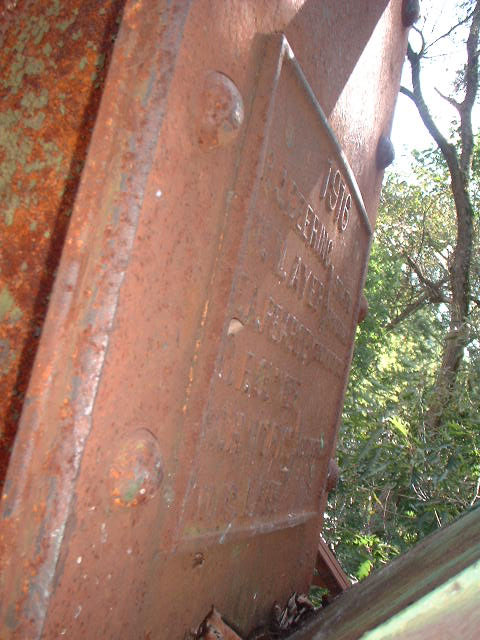In the Franklin County town of New Sharon in central Maine was a bridge that was on a former alignment of US 2 through New Sharon. At the time of the bridge's demolition in February 2014, the New Sharon Bridge was the last known surviving pin-connected highway truss throughout the entire state of Maine. Built in 1916 by New York's Croton Bridge Company, the New Sharon Bridge spanned over the Sandy River. A couple of friends and I visited the old bridge in early September 2004. At the time, it was meant to be a temporary bridge closure.
 |
| Looking at the old truss bridge from the east. |
 |
| A view of the modern bridge that carries US 2, ME 27 and ME 134 over the Sandy River. |
 |
| The Sandy River looking south as seen from the bridge. This is what a lot of interior Maine looks like in the summer. |
 |
| Looking east from the bridge. You can notice the steel deck and that the bridge was probably a bottleneck during its heyday. The bridge leads to a mostly dirt path. |
 |
| New Sharon as seen looking west from the bridge. As you can see, a barricade has been around for a while. |
 |
| The weight limit of the bridge is 3 tons, but someone took the liberty of changing the limit. |
 |
| A plaque on the base of the bridge about when it was built. Looks like the bridge was built by the Croton Bridge Company in 1916. |
 |
| Can't make out this plaque as well, maybe it is honoring the bridge builders or perhaps a few trustees. |
 |
| Sign stating that the bridge is closed, temporarily. Unfortunately, it is now closed permanently as the bridge was demolished in 2014, some ten years after I took this photo. |
Sources and Links:
Bridgehunter -
New Sharon Bridge










Comments